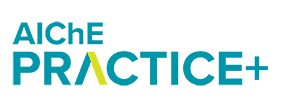
Hazards of a process, such as inherent reactivity, flammability, and toxicity of raw materials, intermediates, products, catalysts, are identified early in process development.
The risk posed by contemplated processing steps during process development must be determined from a knowledge of inherent hazards and controls that could be applied.
Hazard identification and risk analysis (HIRA) begins at the conception of a process and continues through to decommissioning of a processing plant.
The student will learn about the appropriateness of HIRA methods through the life cycle of a process and the fundamentals of the Hazard and Operability (HAZOP) Study Method which is a core HIRA method.
Unit 1:
- Explain what a Hazard Identification and Risk Analysis is
- List the five main phases in the life cycle of a process and provide examples of activities that occur during each phase
- List at least four common HIRA methods and identify the phase or phases in the process life cycle where each method is generally applied
Unit 2:
- Identify components of an incident sequence, including the hazard, the initiating cause, the deviation, the loss event, and the impact
- Describe the key elements of a scenario
- Explain the distinctions between containment and control measures, preventive safeguards, and mitigative safeguards
- Describe the hierarchy of controls
Anyone who will be involved in development of processing from conception through to commercialization, or involved in operation of a processing plant through to its decommissioning. Virtually all chemical engineering students should understand the fundamentals covered in this course prior to graduation. This course is also suitable for chemical engineers in industry who need a refresher on these fundamentals.
This course is the last of four courses on "Hazards and Risk" in the SAChE Undergraduate Process Safety Curriculum. So that the student has the necessary background, it is recommended that ELA970 "Hazards and Risk: What Can Go Wrong", ELA971 "Hazards and Risk: Introduction to Pressure Protection", and EA973 “Hazards and Risk: Safeguards Other Than Relief Systems” be taken before taking this course. These courses introduce process hazards commonly encountered and methods of dealing with them, which are important to understand when applying HIRA techniques.
In addition, it is recommended that the student have a basic understanding of (at least) toxicological hazards, fire and explosion hazards, and chemical reactivity hazards before taking this course. The SAChE Undergraduate Process Safety Curriculum includes courses that cover these topics.
Unit 1: Life Cycle HIRA Methods
- Explain what a Hazard Identification and Risk Analysis is
- List the five main phases in the life cycle of a process and provide examples of activities that occur during each phase
- List at least four common HIRA methods and identify the phase or phases in the process life cycle where each method is generally applied
Unit 2: Developing Scenarios by the HAZOP Study Method
- Identify components of an incident sequence, including the hazard, the initiating cause, the deviation, the loss event, and the impact
- Describe the key elements of a scenario
- Explain the distinctions between containment and control measures, preventive safeguards, and mitigative safeguards
- Describe the hierarchy of controls
Find answers to questions about registration and refunds, tuition and fees, travel and lodging (for location-based courses), how eLearning courses work, how credits work, and more.


